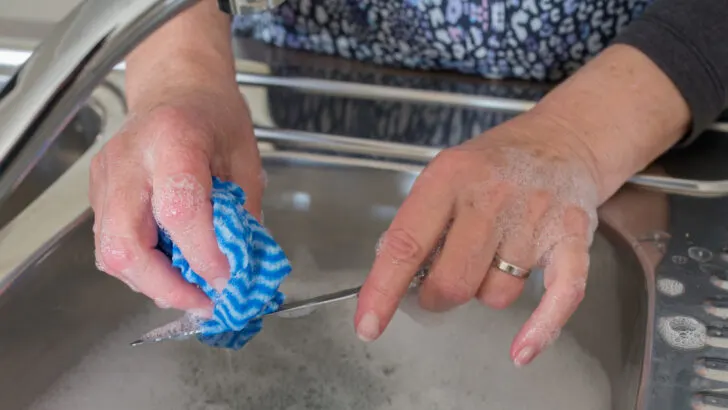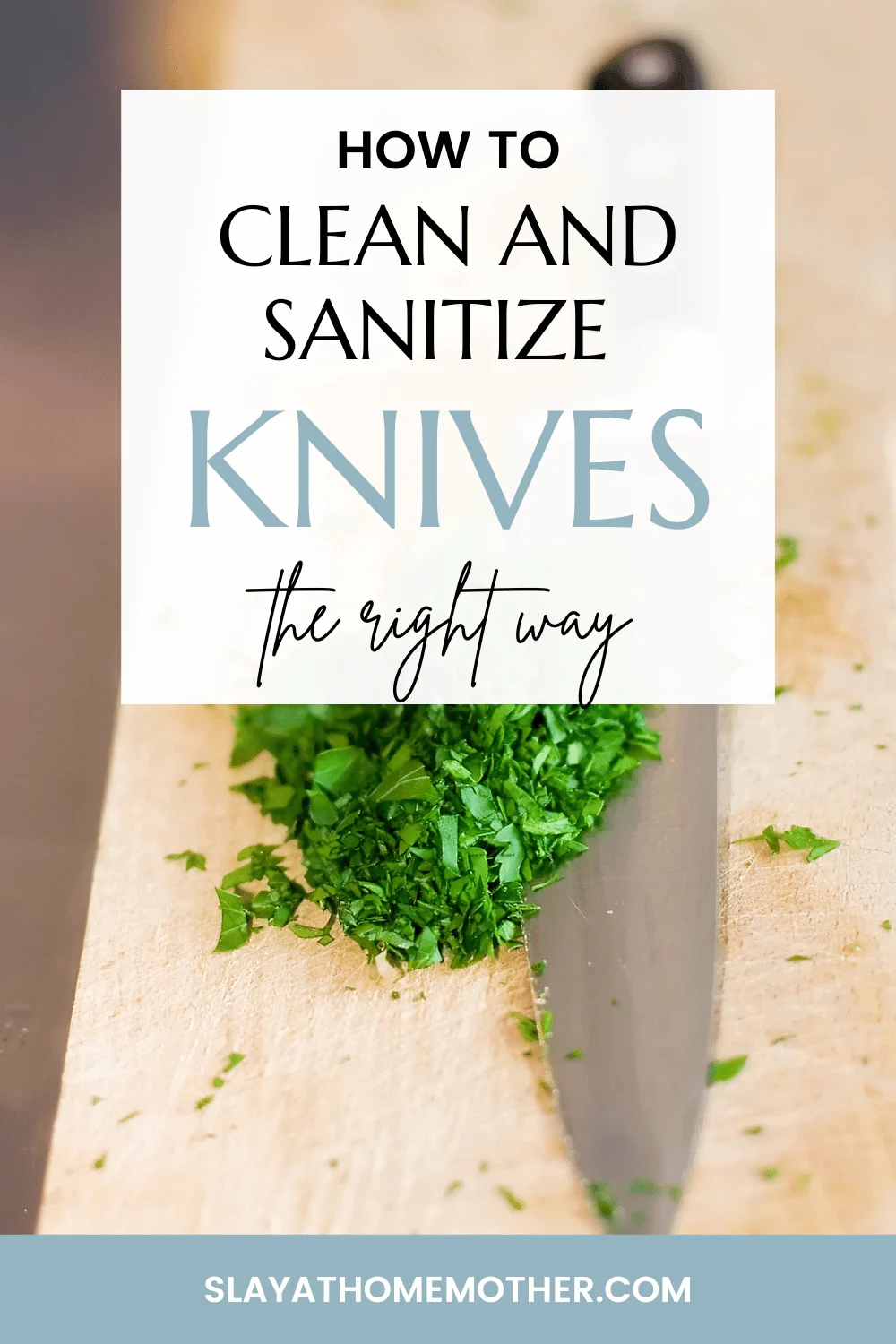Read on to find out when must a knife be cleaned and sanitized, as well as some helpful knife-cleaning tips…
This question came from a reader:
“Hi Corinne! I’ve been in a week-long debate with my husband over this, who says knives don’t really need to be cleaned and sanitized because it’s not that big of a deal, but I thought I’d ask you…when must a knife be cleaned and sanitized, and is it in fact really necessary?”
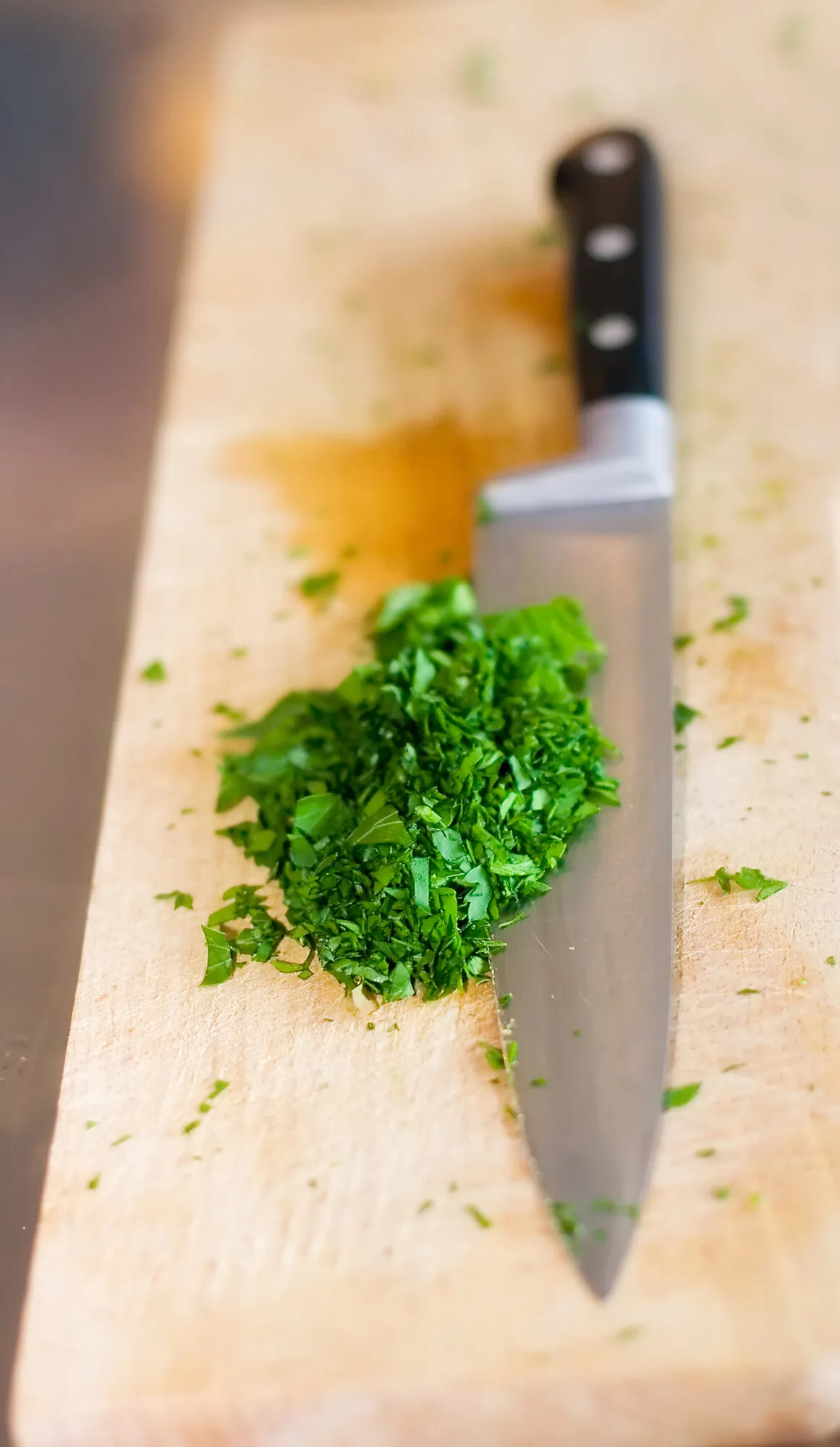
I’m happy to answer, and offer all of the knife cleaning and sanitizing tips I know…
At the bottom of this post, I’ll be sharing some helpful products for you as well.
*This post contains affiliate links, however, all opinions are my own, as always.
When Must A Knife Be Cleaned And Sanitized?
Ideally, a knife should be cleaned and sanitized immediately after use.
How To Clean A Knife
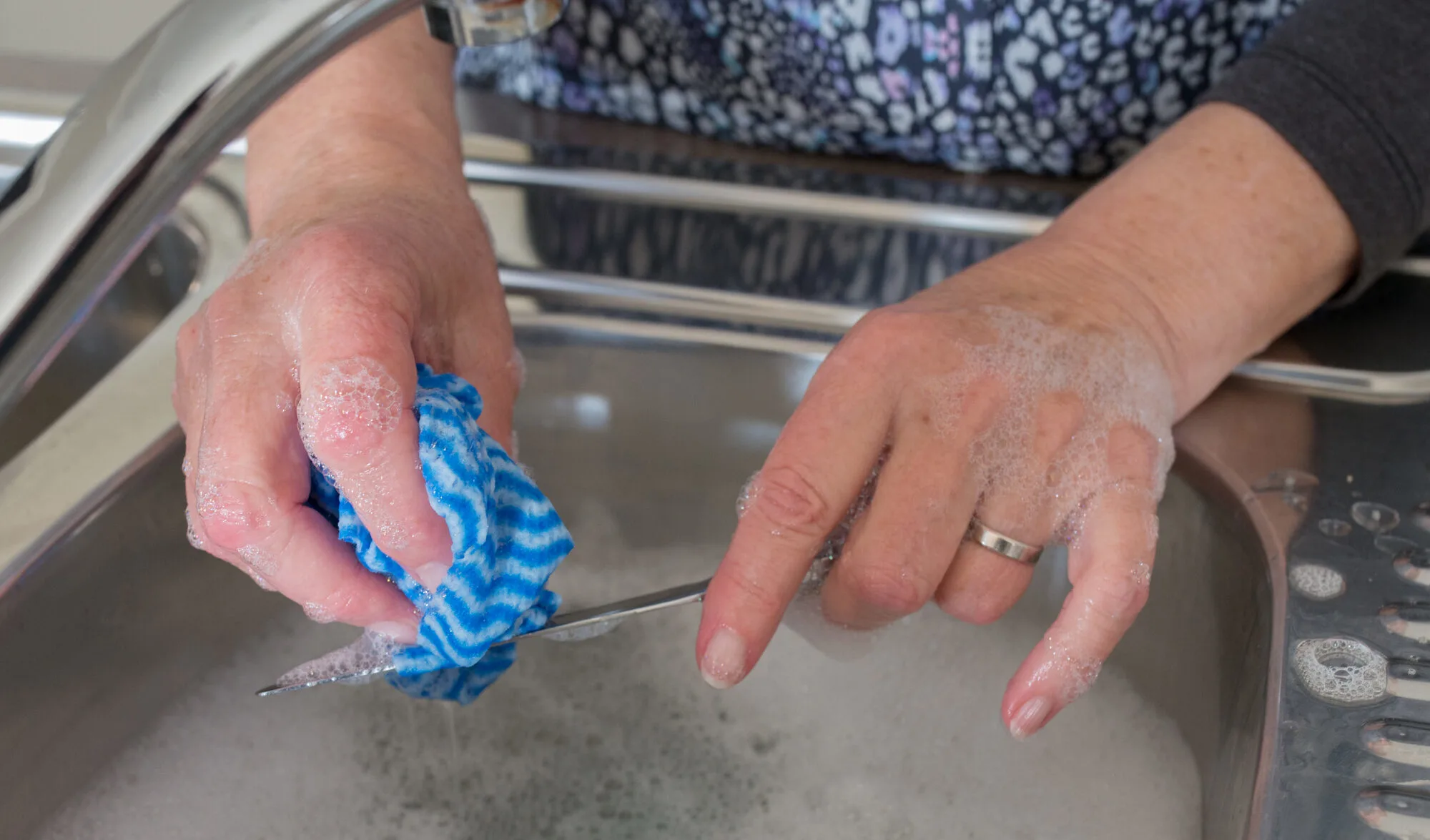
To clean a knife, carefully wipe down the blade, as it’s turned away from you to prevent injury, with a damp sponge or cloth.
Gently wash the blade with a safe cleaning tool or soft bristle brush.
Bristles work best for cleaning a knife with serrated edges.
Take care not to work too fast when scrubbing or washing knife blades as you could slip and cut yourself.
After scrubbing clean and rinsing your knife blade, wipe the blade surface down with a soft cloth to dry it.
Fast drying after cleaning helps prevent rusting.
Safe Knife Cleaning Tools
One of my favorite cleaning tools to help deep clean knives is this scrubber:
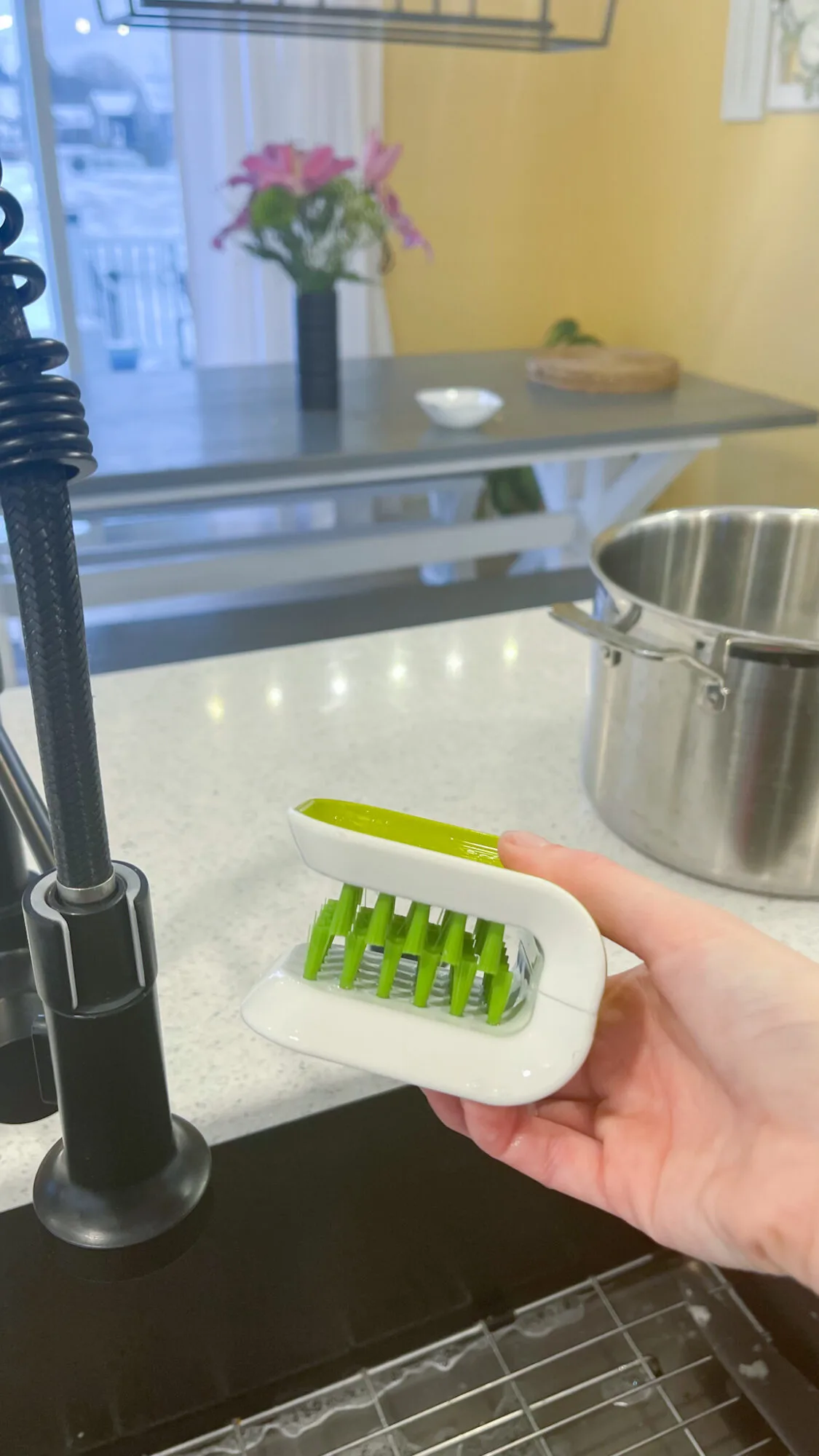
You position the knife blade between the bristles with the blade edge pointed away from you and glide the blade between the bristles back and forth.
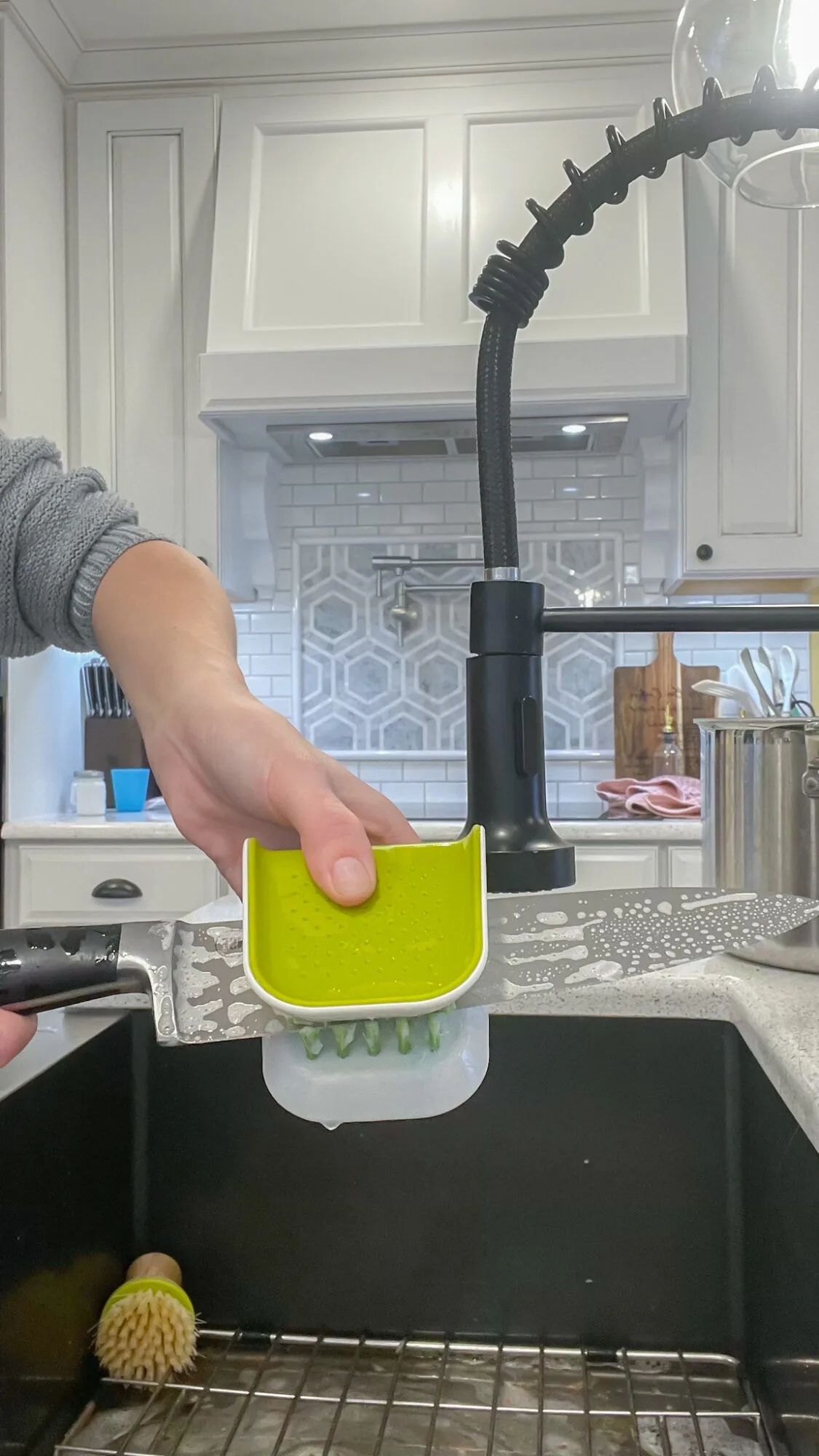
The bristles do the scrubbing for you and work great to loosen any debris or grime stuck to the knife blade.
Tools And Cleaners To Avoid Using On Knives
There are certain cleaners and tools you should avoid using on your knives to clean them, as they can cause injury or rusting of the blades.
Here are some items and cleaners to avoid when cleaning your knives:
- steel wool (this can scratch the blade finish and cause rusting)
- bleach, vinegar, salts, and other harsh cleaners (can cause rusting)
- sharp items (utensils, other knives)
According to Chef’s Vision, washing knives in your dishwasher can also lead to rusting.
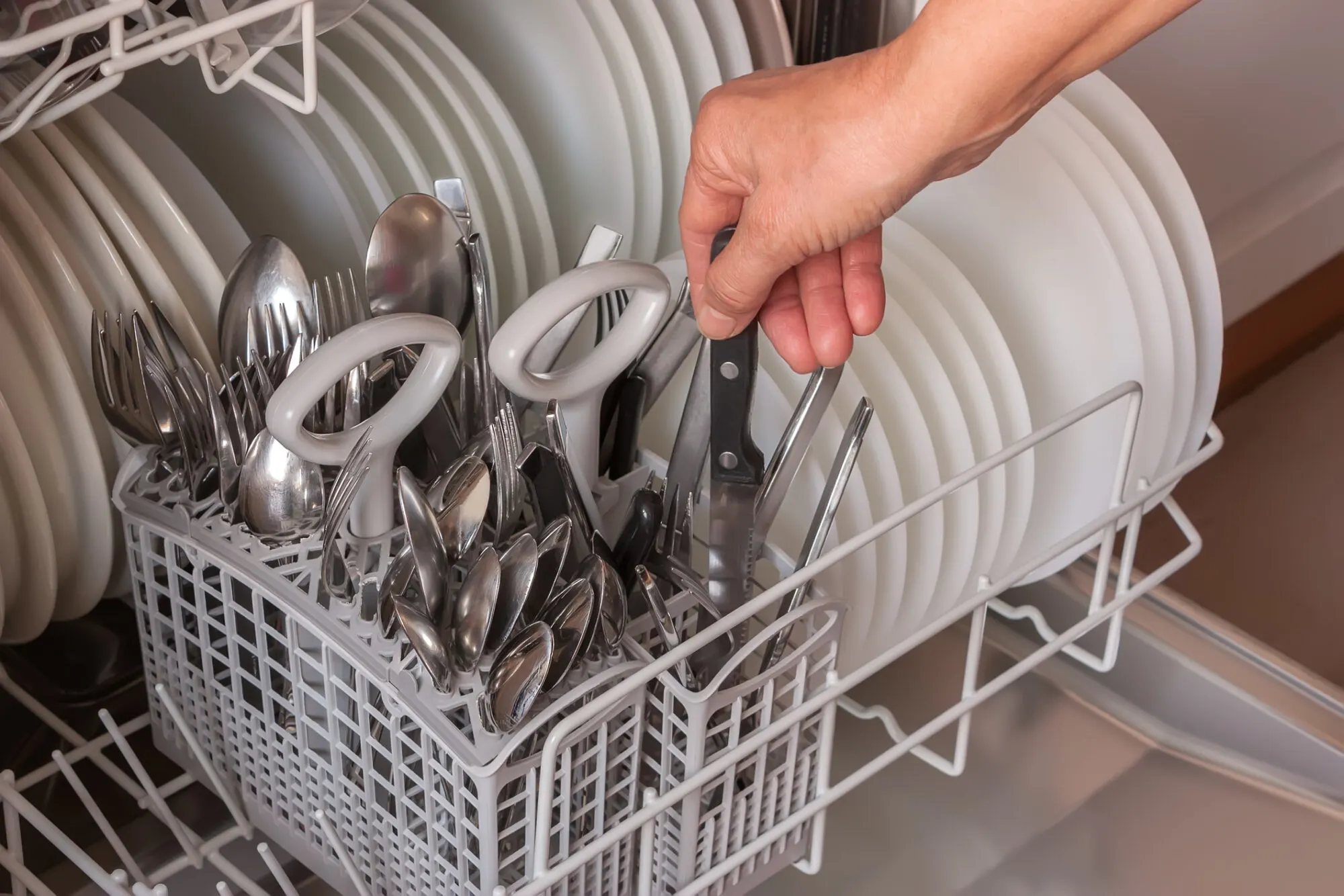
I used to be a serial place-our-knives-in-the-dishwasher-to-avoid-handwashing type of mom – but now I know better, and so do you!
How To Sanitize A Knife
Although washing your knife will remove the bacteria and debris from the blade, you may find yourself wanting to sanitize your knife blade.
To sanitize a knife blade, wet a cloth or paper towel with rubbing alcohol.
Carefully, with the freshly-cleaned and dried knife blade facing away from you, wipe down the blade with rubbing alcohol.
Be sure not to work too quickly or you risk injury to your person.
The rubbing alcohol will dissipate quickly, sanitizing the blade.
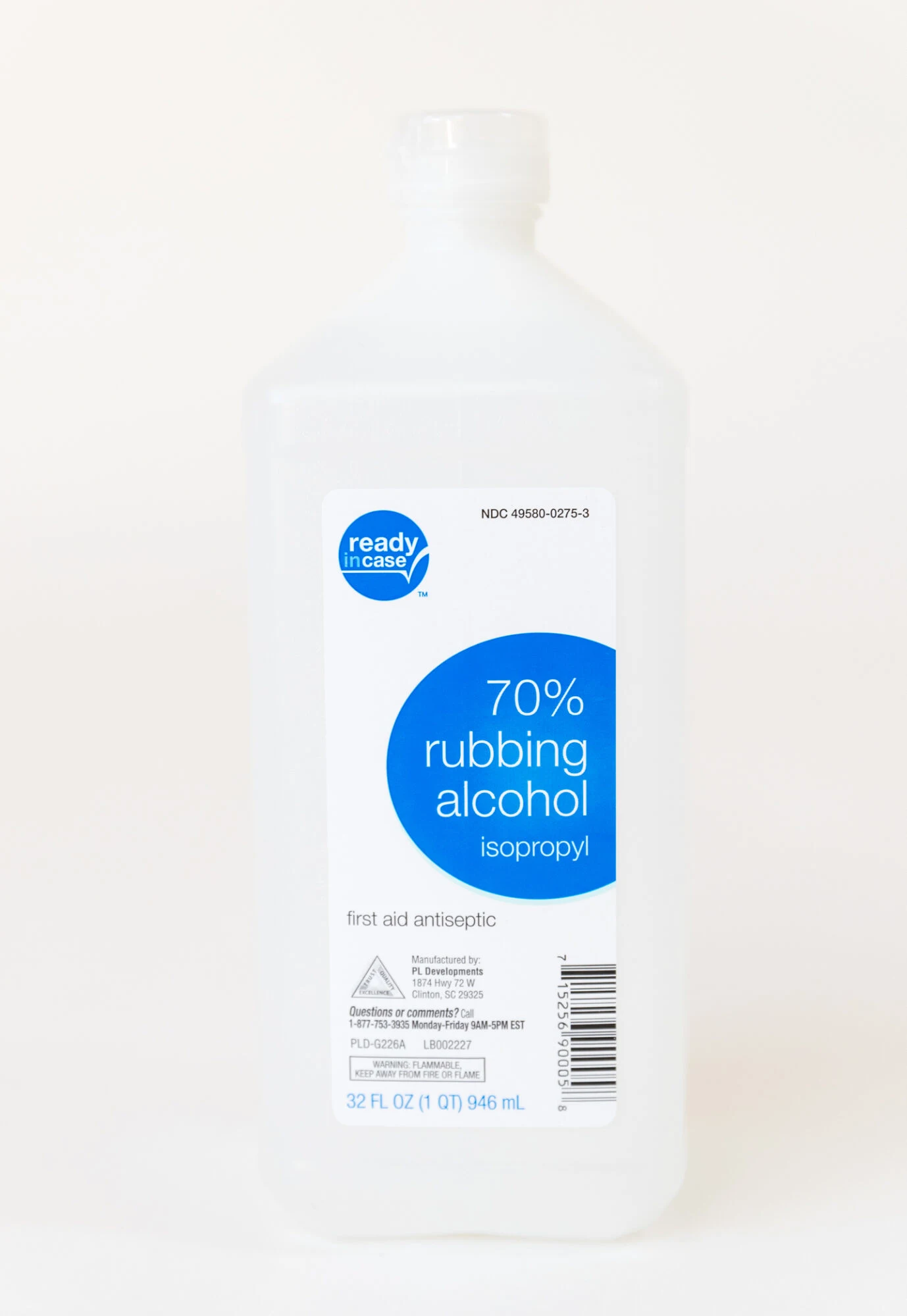
The blade will dry very quickly, and can now be placed inside a slot of your knife block.
How To Clean A Knife Block
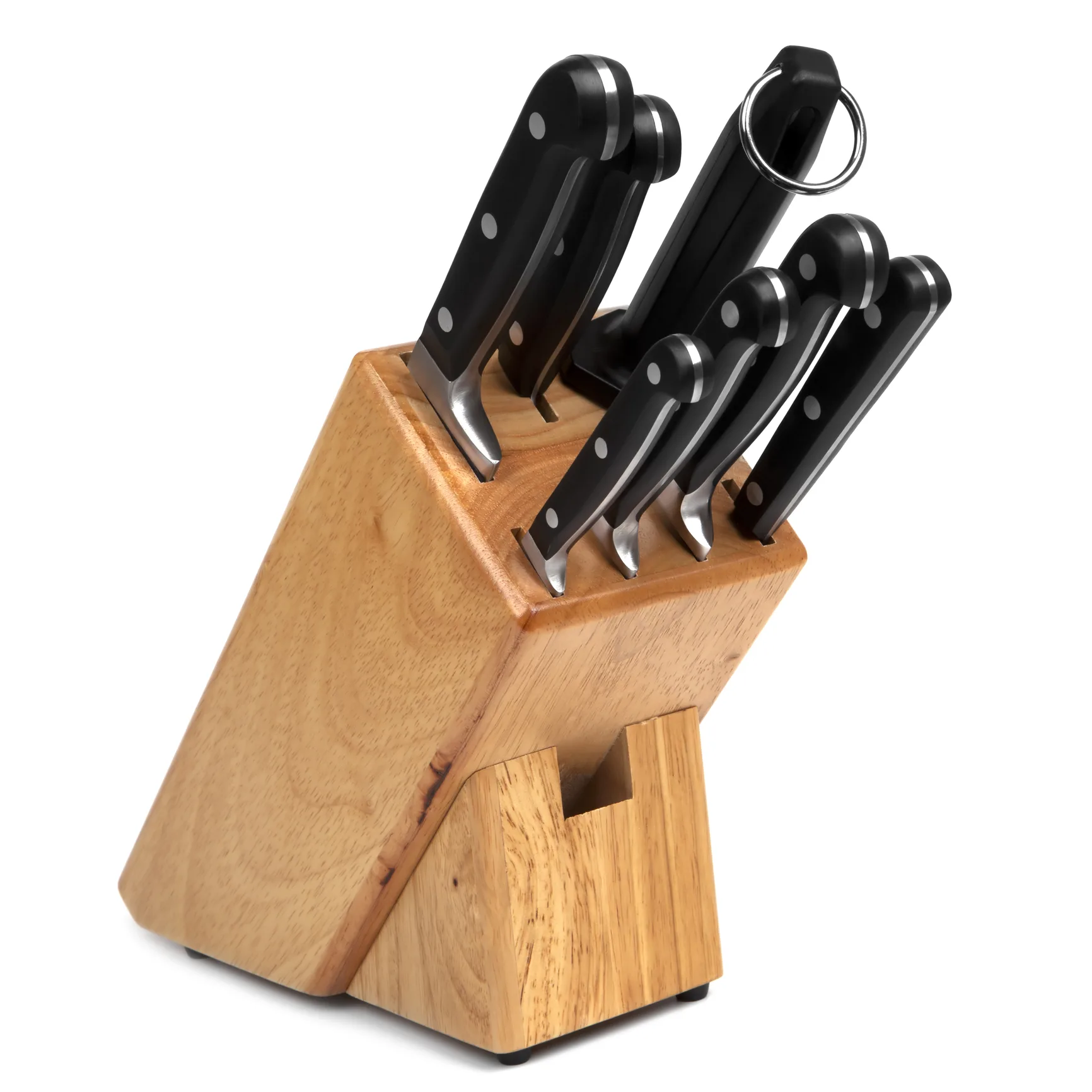
To go one step further, you may also be wondering how to clean a knife block.
This is really simple to do!
For a wooden knife block, remove all knives and place them in a container together on your counter away from children.
Turn your empty knife block over and shake all crumbs out.
This step is very important, as once the crumbs are wet, they won’t budge.
You can tap on the bottom of your knife block with a rolling pin to help shake out all the crumbs.
Next, mix together in a large bowl (or fill your sink) with warm water and diluted bleach.
The ratio to use should be about 1 tbsp. per gallon of water.
Allow your knife block to soak for 60 seconds, and remove it.
Give your knife block a thorough rinse inside the knife slots and all around.
To dry your knife block, turn the block upside down and allow it to air dry for a few hours.
Your knife block should be completely dry before placing the knives back inside the slots.
If you insert the knives back into the slots while they are still wet, you will create an environment that can breed bacteria.
In a pinch for time? You can use a hair dryer to help dry the knife slots of your knife block.
If you wish to avoid using bleach, you can also use undiluted white distilled vinegar for this task.
Alternatives to Wood Knife Blocks
If you want to stray away from the bulk of a wooden knife block on your counter, here are some top options for knife storage I would recommend:
- this block is a safer holder that fits a lot of modern decor and comes apart for easy cleaning and drying
- this knife holder allows for proper airflow and serves as both a holder and drying rack, if you want, to help reduce and inhibit the growth of bacteria
- I own this in-drawer knife storage container and it’s been a great space-saver – it also expands to contain other kitchen utensils

